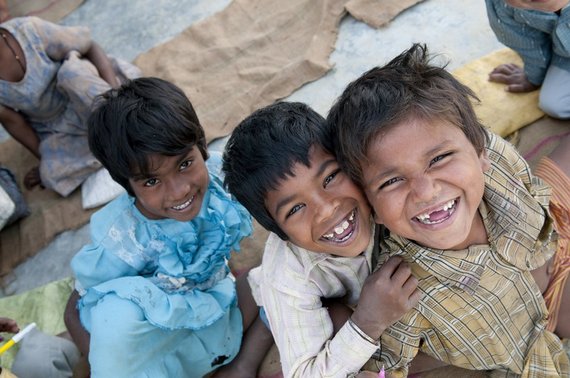When I was a young girl in Pakistan, my mother would remind me daily to only drink boiled water. We almost lost my sister to severe diarrhea and my mother was determined to make sure this didn't happen to our family again.
Back then, I didn't fully understand her. It wasn't until years later, when I became a pediatrician and a child health researcher, that I realized how deadly watery stools can be.
Unlike for adults, the rapid loss of liquids caused by severe diarrhea can bring children and babies to the brink of death in a matter of hours. Last year alone, over half a million children under five died from diarrheal diseases - that's more than one every minute. And for those that survive, the resulting rapid dehydration and metabolic disturbances can lead to long-term damage to the gut and increased risk of malnutrition.
The sad truth is that the ripple effects of something as seemingly simple as a case of childhood diarrhea often extend far beyond health: children miss out on school, treatment costs can drive their families into poverty and in many countries, nursing a sick kid back to health can use up resources that are needed for other essentials like food or education.
Shockingly, although the illness touches almost every family on the planet at one time or another, the primary bugs that cause diarrhea remained obscure until recent years.
In the early 1900s, many members of the scientific community accredited causes as varied as changes in seasons, feelings of panic, teething or capillary restriction. And while we've known for decades that water, sanitation, hygiene, bacteria, viruses and parasites play a role in diarrhea, it wasn't until 2013 - when the Global Enteric Multicenter Study (GEMS) released - that we were able to identify the top four culprits.
The study, which looked at 22,000 kids across seven countries in sub-Saharan Africa and South Asia, was game-changing. Not only did it identify the pathogens that cause half of all cases of diarrhea in developing countries, it also singled out the biggest offender: rotavirus.
Based on the study, the global health community rallied behind prioritizing the need to get children life-saving rotavirus vaccines. But even so, we still had an imprecise understanding of these bugs.
That changed a few days ago.
The Lancet just published a reanalysis of samples from GEMS. The updated study looked at the same samples as before, but used more sensitive and advanced diagnostic methods that were able to identify the cause of diarrhea for approximately 90% of all the cases. For the first time in human history, we can identify almost all of the bugs that cause diarrhea - and what you can identify, you can prevent.
While the updated study confirmed that rotavirus remains one of the top causes of diarrheal diseases, we also learned that a bacteria unrecognizable by most, Shigella, is responsible for more illness than we previously thought.
In a world where cholera, typhoid and dysentery are well known as common diseases, it turns out that the greatest killers of children have almost no name recognition amongst parents or policymakers.
So what can we do?
For starters, most children can be saved with the solutions we have today and raising awareness of these is key. My mom was right, boiling drinking water is essential in many parts of the world. But we can also prevent diarrheal disease by improving immunization rates, community sanitation practices and encouraging moms to exclusively breastfeed throughout early infancy to build babies' immune systems.
Furthermore, increasing access to prevention and treatment tools is critical to give all children the chance they deserve. It is essential to make sure that life-saving oral rehydration solutions and zinc therapy are quickly available.
Vaccines for Shigella don't yet exist but are being studied and developed by scientists, and we need to support and speed up that research. However, vaccines for rotavirus are available now, and we need to make sure every child in the world gets them. Since 2013, the number of countries that have introduced rotavirus vaccines into their national immunization programs has increased from 17 to 81. Despite this, only 15% of the children in the world's poorest countries have access to it.
There is much to do, and scientists, while mighty, cannot do it alone. Governments have a pivotal role to play to ensure children everywhere have access to these lifesaving tools. This will require increased political will including increased financial commitments and policies that prioritize child health.
Every child should have the opportunity to live a long, healthy and productive life - and it's up to us to make sure they have that chance.
